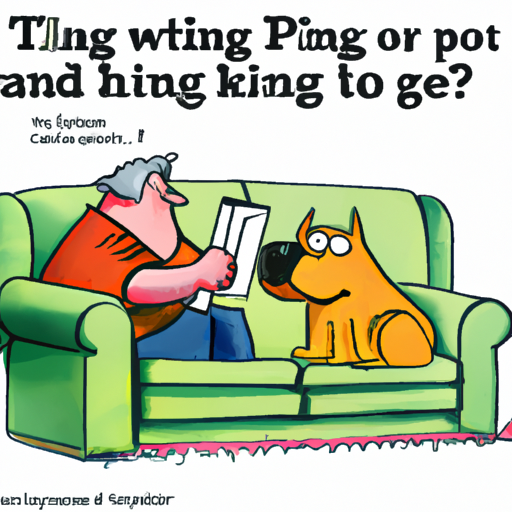Understanding Your Dog’s Fear
First and foremost, it’s crucial to understand why your dog might hate getting its nails trimmed. Fear often stems from past negative experiences, or simply the unfamiliar sensation of having their paws handled.
- Your dog might have had a bad experience with nail trimming in the past.
- The sensation of the clippers might be uncomfortable or scary for them.
- They might not be used to having their paws touched.
Understanding your dog’s fear is the first step to overcoming it. Patience, understanding, and gradual exposure can help make nail trimming a less stressful experience for your dog.
Preparation for Nail Trimming
Before you start the actual nail trimming, there are several things you can do to prepare both yourself and your dog.
-
Get the Right Tools: Invest in a good pair of dog nail clippers. These should be sharp and comfortable to hold. A nail file can also be helpful for smoothing rough edges after clipping.
-
Create a Calm Environment: Choose a quiet, comfortable spot where your dog feels safe. Avoid loud noises or other distractions.
-
Gradual Introduction: Let your dog sniff and explore the nail clippers. Give them treats and praise to create positive associations with the tool.
-
Paw Handling: Practice touching your dog’s paws, applying gentle pressure to each toe, and extending the nails. This can help your dog get used to the sensation of having their paws handled.
The Nail Trimming Process
Now to the actual nail trimming process. Remember, take it slow and maintain a calm and reassuring demeanor. Your dog can pick up on your anxiety, which may make them more nervous.
-
Hold the Paw Firmly: Hold your dog’s paw in one hand and the clippers in the other. Make sure your grip is firm but gentle.
-
Identify the Quick: The quick is the sensitive part of the nail that contains blood vessels and nerves. It’s usually pink in light-colored nails, but harder to see in dark nails. Avoid cutting into the quick, as it can cause pain and bleeding.
-
Make the Cut: Position the clippers over the nail, a little away from the quick, and apply pressure quickly and confidently. If your dog pulls away, reassure them and try again.
-
Reward Your Dog: After each successful clip, give your dog lots of praise and a treat. This will help reinforce the positive association with nail trimming.
Troubleshooting and What to Do If You Cut the Quick
Even with careful preparation and practice, accidents can happen. If you cut into the quick, your dog might yelp in pain and their nail may start bleeding.
- Stay Calm: Your reaction can influence your dog’s behavior. Stay calm and reassure your dog.
- Stop the Bleeding: Apply styptic powder or corn starch to the nail to stop the bleeding. If bleeding doesn’t stop within a few minutes, contact your vet.
- Give Your Dog a Break: If your dog seems distressed, give them a break before trying again. Remember, it’s a learning process for both of you.
| If Your Dog Reacts By… | You Should… |
|---|---|
| Yelping in pain | Stop immediately and comfort your dog |
| Pulling their paw away | Take a break and try again later |
| Becoming aggressive | Stop and consider professional grooming services |
Aftercare and Maintenance
After successfully trimming your dog’s nails, it’s important to continue with regular maintenance to keep their nails at a healthy length. Regular walks on pavement can also help naturally file down their nails.
FAQ Section
Q: How often should I trim my dog’s nails?
A: This depends on your dog’s lifestyle and breed. Generally, most dogs need their nails trimmed every 1-2 months.
Q: What if my dog won’t let me near their paws?
A: It may take some time and patience to get your dog used to paw handling. Start slow, with lots of treats and praise.
Q: What to do if my dog’s nail is bleeding?
A: Apply styptic powder or corn starch to stop the bleeding. If it doesn’t stop within a few minutes, contact your vet.



